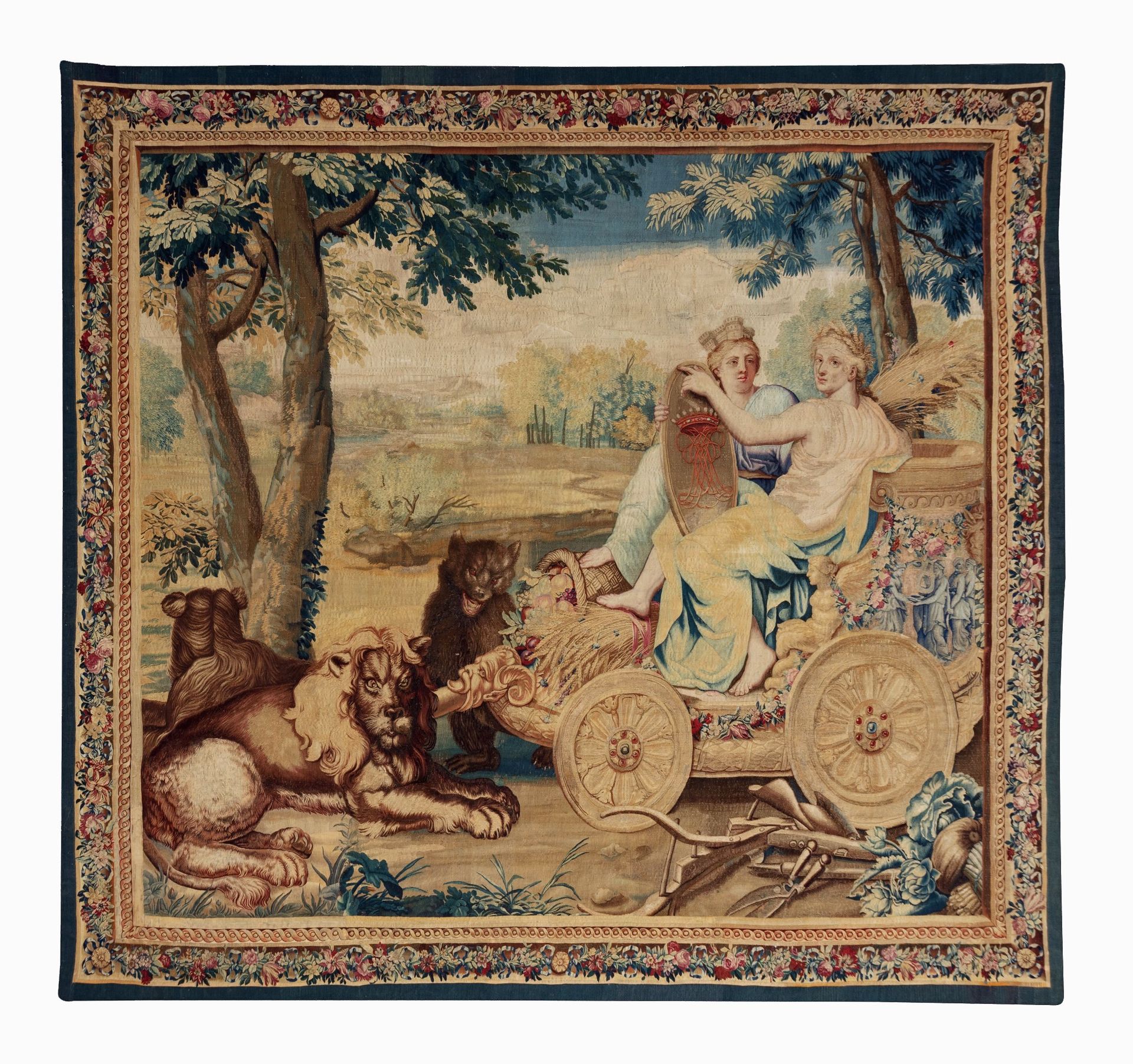Description
Exceptional and important tapestry by Manufacture des Gobelins circa 1670, Louis XIV period. Hanging of the Elements, Earth. Cybele and Ceres. Part of the suite of tapestries concerning the Elements. Carton after Charles LE BRUN; DE LA CROIX (workshop) and AUDRAN in 1664 and completed around 1670. 300 cm high x 315 cm wide Remarkable freshness of color. Beautiful polychromy. Silk, wool, gold thread and smooth bass. Unlined tapestry with braids. Some weaknesses in the silks. Cybele and Ceres sit in a chariot with a lioness from behind and a lion from the front. Note a fantastically ferocious bear-like animal. Ceres is the goddess of harvest, agriculture and fertility. Cybele is a deity of Phrygian origin, personifying wild nature. She is represented as "Magna Mater", Great Goddess, Mother Goddess or Mother of the gods. In the foreground, fruit in a basket, horns of plenty and agricultural implements. In the background, plains and forest. Polychrome corded flower garlands framed by a fine rolling border.
69
Exceptional and important tapestry by Manufacture des Gobelins circa 1670, Louis XIV period. Hanging of the Elements, Earth. Cybele and Ceres. Part of the suite of tapestries concerning the Elements. Carton after Charles LE BRUN; DE LA CROIX (workshop) and AUDRAN in 1664 and completed around 1670. 300 cm high x 315 cm wide Remarkable freshness of color. Beautiful polychromy. Silk, wool, gold thread and smooth bass. Unlined tapestry with braids. Some weaknesses in the silks. Cybele and Ceres sit in a chariot with a lioness from behind and a lion from the front. Note a fantastically ferocious bear-like animal. Ceres is the goddess of harvest, agriculture and fertility. Cybele is a deity of Phrygian origin, personifying wild nature. She is represented as "Magna Mater", Great Goddess, Mother Goddess or Mother of the gods. In the foreground, fruit in a basket, horns of plenty and agricultural implements. In the background, plains and forest. Polychrome corded flower garlands framed by a fine rolling border.
You may also like
